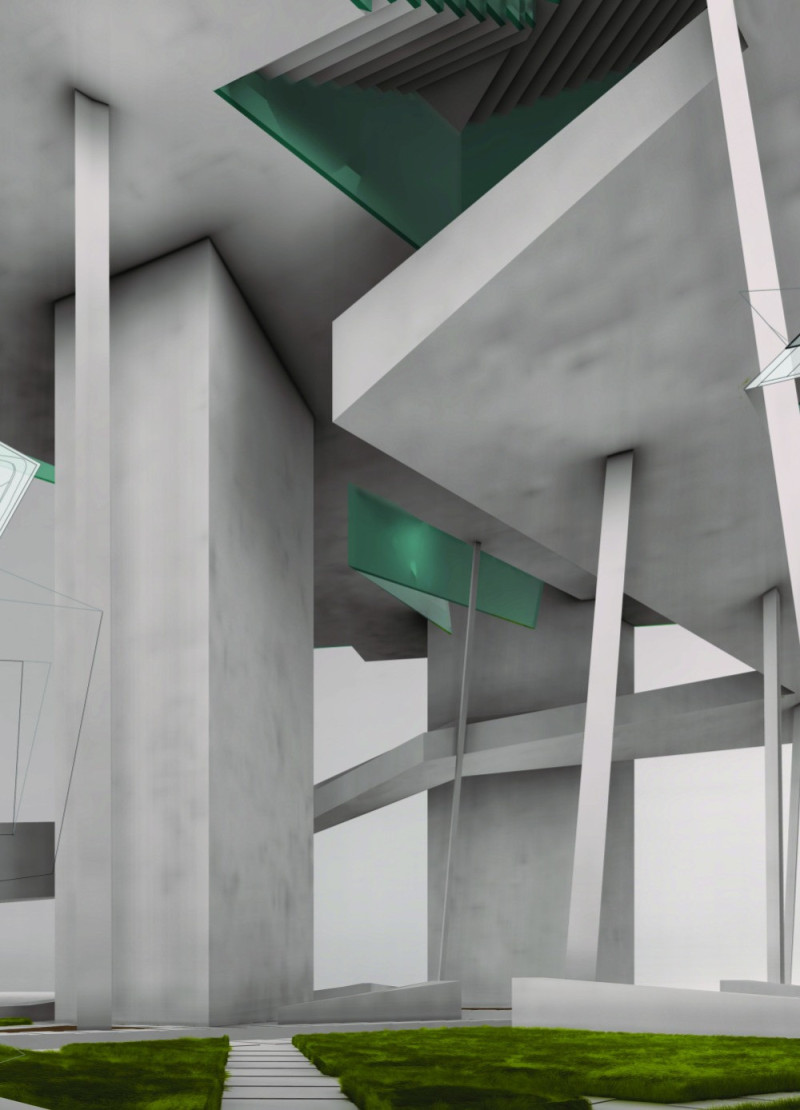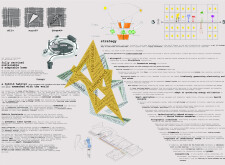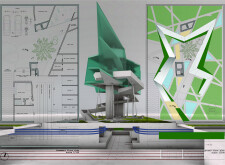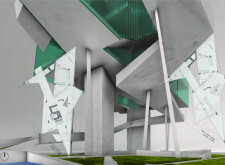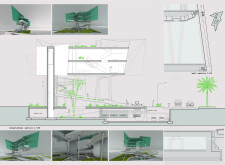5 key facts about this project
## Overview
Located in an urban context, the design integrates residential and workspace elements, emphasizing adaptability and community engagement. The concept envisions living environments that are not only shelters but also dynamic spaces, responding effectively to the evolving needs of inhabitants while promoting a strong sense of community. The project prioritizes the integration of advanced technology and sustainable practices to create a resource-efficient habitat that embodies future living.
## Materiality and Technological Integration
The selection of materials reflects a commitment to innovation and environmental responsibility. Key components include cellular concrete sourced from organic materials, which enhances durability while minimizing ecological impact, and smart glass that allows for dynamic control of light and thermal conditions. The use of nano-coatings facilitates maintenance and addresses environmental challenges through enhanced durability.
Technological features include a microgrid system for energy management and interactive holographic interfaces that enable seamless integration of smart appliances and devices. These elements are coordinated through a central management system, optimizing user experience and operational efficiency. The design also implements advanced water and waste management systems that mitigate resource consumption and support sustainable living practices.
## Spatial Organization and Connectivity
The architectural layout promotes connectivity through its multi-tiered configuration and strategic orientation. Elevated design elements encourage interaction with surrounding green spaces and foster community engagement. The spatial organization is characterized by a bold, angular form that embodies an innovative approach to modern architecture.
Adaptability is a central theme, with spaces designed to serve multifunctional purposes over time. This flexibility ensures the structure remains relevant to occupants' changing needs, enhancing the overall user experience. Additionally, health monitoring facilities, equipped with diagnostic interfaces, ensure resident well-being by providing essential health insights.


